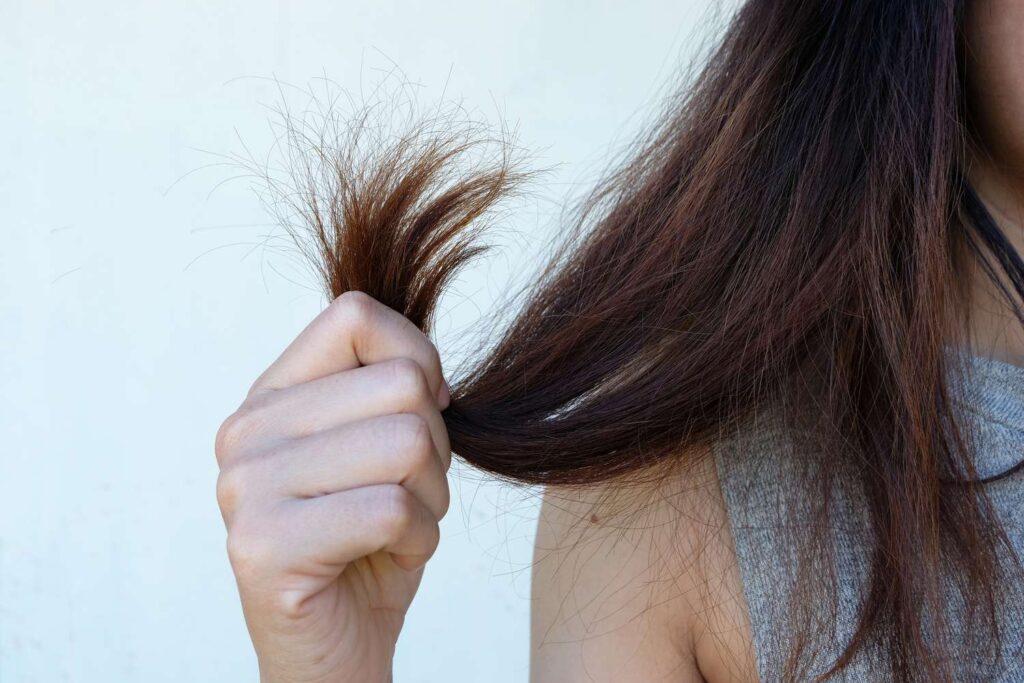Crinkly hair strands can be a frustrating and confusing problem for many people. Crinkle hair damage refers to hair that appears frizzy, brittle, or zigzagged due to factors like moisture loss, heat styling, chemical treatments, or rough handling, all of which weaken the hair shaft and disrupt its natural structure. Some hair strands may become crinkly due to dehydration, damage from heat or chemicals, protein imbalance, or natural texture changes, which can cause certain strands to lose smoothness and develop irregular shapes. If you’re experiencing crinkly hair strands, it’s important to understand the causes and solutions for this issue. In this article, we’ll explore these causes and solutions to help you achieve healthy, smooth, and manageable hair.
Common Causes of Crinkly Hair Strands
Crinkly hair is often caused by a lack of moisture, protein imbalances, or heat and chemical damage, leading to irregular texture and frizz. One major culprit is the overuse of heat-styling tools like flat irons and curling wands. The high temperatures of these tools can damage the hair cuticle, causing it to become rough and frizzy. One of the main causes is the overuse of heat-styling tools like flat irons and curling wands. The high temperatures of these tools can damage the hair cuticle, causing it to become rough and frizzy.
Another common cause of crinkly hair strands is chemical damage from hair treatments like coloring, bleaching, and perming. These treatments can weaken the hair and cause it to become dry, brittle, and prone to breakage.
Genetics and natural hair texture can also play a role in crinkly hair strands. People with naturally curly or wavy hair may be more prone to experiencing crinkly hair strands, especially if they do not properly care for their hair.
Finally, environmental factors like humidity can contribute to crinkly hair strands. High levels of humidity can cause the hair to absorb moisture from the air, causing it to become frizzy and difficult to manage.
How to Diagnose Crinkly Hair Strands
To diagnose crinkly hair strands, you’ll need to examine your hair strands for signs of damage. Look for rough, frizzy, or split ends, and pay attention to the overall texture and appearance of your hair. Crinkly or crinkle split ends occur when the hair’s cuticle is damaged, causing it to weaken, fray, and develop irregular, zigzag-like splits, often due to dryness, heat damage, or rough handling. You can also consult with a professional stylist who can assess the health of your hair and provide recommendations for treatment.
Solutions for Crinkly Hair Strands
If you’re experiencing crinkly hair strands, there are several solutions you can try to improve the health and appearance of your hair. One of the most important steps is to reduce your use of heat styling tools. If you must use these tools, be sure to use a heat protectant spray to minimize damage to your hair.
Choosing gentle hair care products can also help to reduce crinkly hair strands. Look for products that are free of harsh chemicals like sulfates and parabens, which can strip the hair of its natural oils and cause damage. Opting for protective hairstyles like braids and buns can also help to minimize damage to the hair.
Getting regular trims to remove damaged ends is another important step in improving the health of crinkly hair strands. By removing damaged ends, you can prevent further damage and help your hair grow stronger and healthier.
Using hair masks and treatments can also help to improve the health of crinkly hair strands. Look for products that contain nourishing ingredients like argan oil, keratin, and vitamin E, which can help to repair and strengthen the hair. To fix crinkly hair strands, focus on deep conditioning treatments, use hydrating hair masks regularly, minimize heat styling, and apply leave-in conditioners to restore moisture and smoothness.
Finally, embracing your natural hair texture can be a powerful solution for crinkly hair strands. Rather than trying to force your hair into a style that it is not suited for, embrace your natural texture and work with it to create styles that are both beautiful and healthy.
Prevention of Crinkly Hair Strands
Preventing crinkly hair strands is all about maintaining healthy hair habits. This includes avoiding overuse of heat styling tools, using gentle hair care products, and protecting your hair from environmental factors like humidity. It’s also important to eat a healthy diet rich in vitamins and minerals, which can help to nourish your hair from the inside out.
Conclusion
In conclusion, having crinkly hair strands can be frustrating, especially if you’re unsure about the cause. However, by understanding the common causes and implementing the appropriate solutions, you can achieve smooth, healthy hair.
Remember to nourish your hair with a balanced diet, protect it from heat and other damaging factors, and maintain a regular hair care routine that includes conditioning and moisturizing.
Additionally, if your crinkly hair is caused by an underlying health condition, seek medical attention and treatment as soon as possible. With a little patience and care, you can have healthy, smooth, and beautiful hair.

